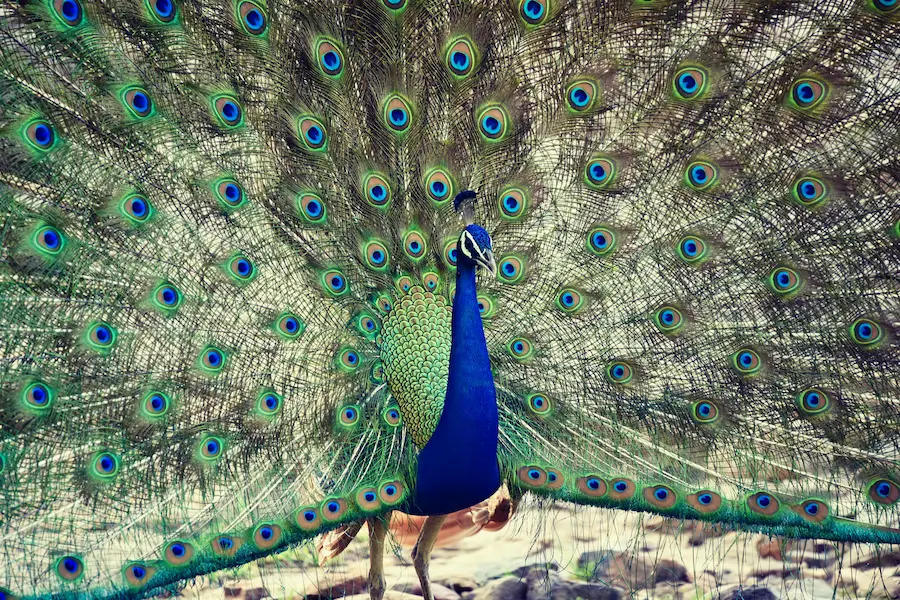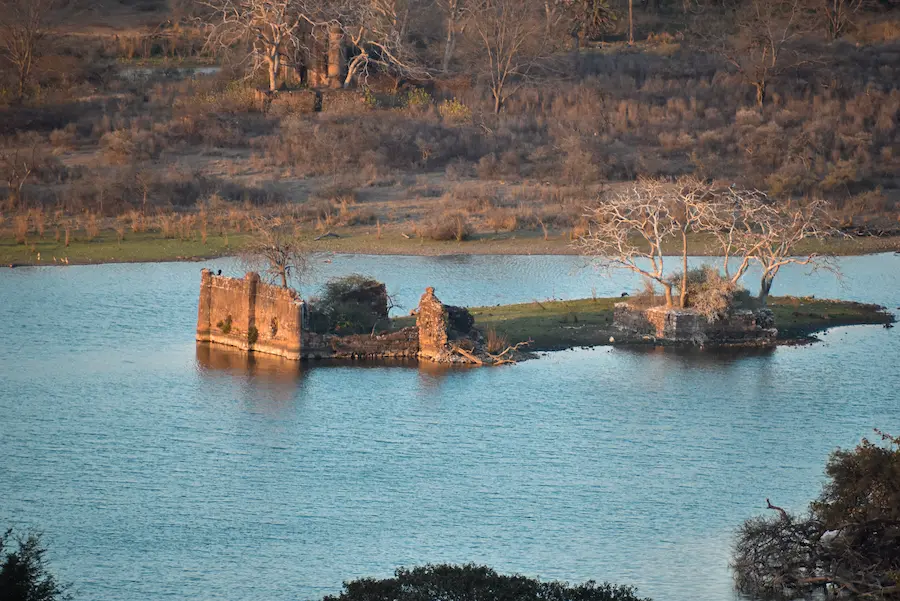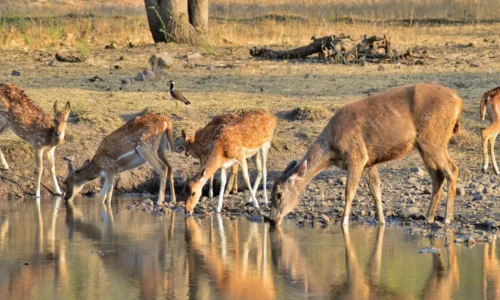The large water basins in and around the park make Ranthambore a surprising winter home for migrating birds, despite the park’s more well-known reputation as a tiger reserve for the north-western part of the country. The native birds of Ranthambore are just as impressive as the migratory ones. There are around 300 bird species that call this reserve home. Over 120 species can be counted in just three days by a dedicated birdwatcher.
Ranthambore National Park is a fantastic destination for birdwatchers, but the park’s tight regulations may turn away dedicated visitors. Inside the park, you can go on a jeep or canter safari to observe the avian life. Malik Talao, the Ranthambore Fort, Rajbagh Talao, Padam Talao, and the Jhalra area are some of the greatest spots in the park for bird watching. Outside of the park, you can stroll around and explore some excellent birding areas, something that is not allowed within. Soorwal Lake, Manasarovar Lake, Amlideh (Banas River), and the Helipad area are some of the best places to go bird-watching outside of the park.
When to Go Bird Watching in Ranthambore National Park?
You might see the most birds in the park between January and April. During certain times, you can observe both seasonal migrants and year-round residents. As you explore the land of Maharajas your stay should be just as royal and with style, stay with us at Ranthambhore Regency and enjoy a delightful vacation.
The wide variety of birds at Ranthambore
The most notable birds of Ranthambore include the Indian courser, Painted spurfowl, Indian skimmer, quails, larks, Ranthambore Bird watching pipits, prinias, Graylag Goose, Woodpeckers, Indian Gray Hornbills, Common Kingfishers, Bee Eaters, Cuckoos, Parakeets, Asian Palm Swift, Owl, Nightjars, Pigeon, Dove, spoonbills, kingfishers, quails, storks, geese, Crakes, Snipes, Sandpipers, Gulls, Terns, Great Crested Grebe, Eagles, Darters, Cormorants, Egrets, Herons, Bitterns, Flamingos, Ibis, Pelicans, Storks, Pittas, Shrikes, Treepies, Crows, Orioles, Cuckoo-Shrikes, Minivets, Drongos, Flycatchers, Ioras, Wood Shrikes, Pipits, Bayas, Sparrows, Finches, Wagtails, Munias, Bulbul, Mynas, Falcons, grey legged goose, pintails, and shell ducks etc.

In addition to Ranthambore National Park, the following locations are around the park that offer excellent birdwatching and are perfect for strolls:
Surwal Lake
A seasonal lake nestled amongst miles of farmland; it attracts various wintering bird species. A wide variety of birds, from flamingos to painted storks, spoonbills, demoiselle greylag geese, and cranes, congregate in the area from November through March. The greatest time to see birds is just after sunrise. The Surwal Lake dries up between April and May.
Manasarovar Lake
Manasarovar Lake, the largest lake in Ranthambore, is located near the park’s southern boundary. In the winter, you may go bird watching and observe thousands upon thousands of pintail ducks, pelicans, herons, and geese. You can also take pleasure in some excellent strolls here.
Banas River or Amlidih
Amlidih sits along the banks of the Banas, an excellent location for birdwatching. Birdwatchers may spot Indian skimmers and river lapwings here. Aside from watching birds, visitors can also go boating, tour a nearby village, ride a camel cart, or enjoy a romantic candlelight meal by the water.
Helipad or Sherpur Village
The helipad is an excellent place to spot birds such as chats, sand grouse, Indian courser, larks, and more. Some additional migratory species typically found in drier environments have been spotted here as well.
In addition, the Amreshwar Mahadev Temple, Pali Ghat, Rameshwaram Ghat, and Bhoori Pahari are some other locations in the Ranthambore Trip where you may enjoy bird viewing. Ranthambore National Park is the finest place to get away to the wilderness and reconnect with Mother Nature because it is surrounded by pristine and invigorating natural beauty. Therefore, if you want to get some much-needed relaxation away from the hustle and bustle of the city, you should spend your next vacation at Ranthambore.




